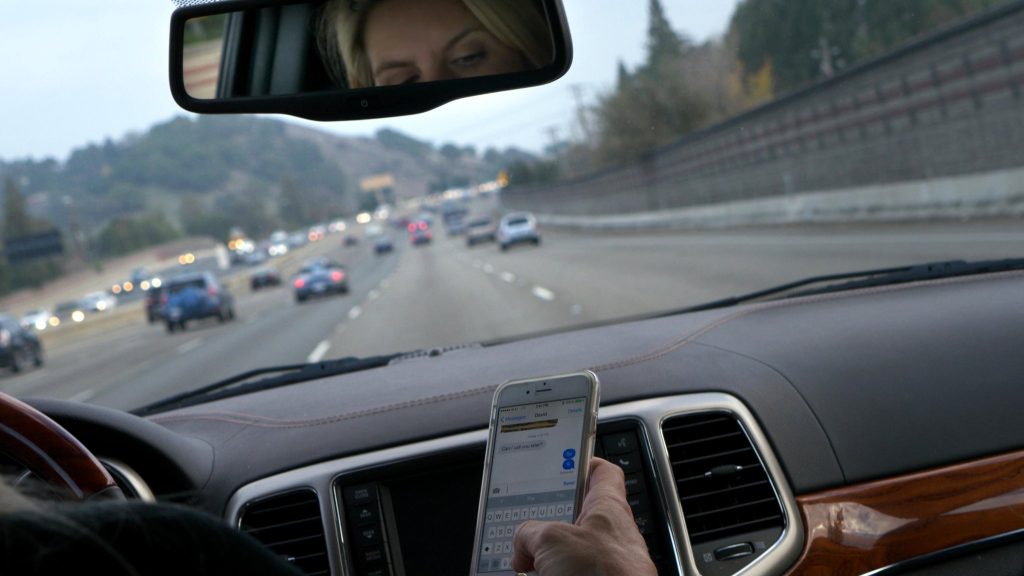
The message plastered across the roadside banner read: “Text and drive”. The advert was taken out by Wathan Funeral Home, whose smart logo sat at the bottom of the billboard.
Except no such home exists.
The macabre stunt was set up by a group in Ontario trying to raise awareness of road deaths caused by being distracted. “We’re just trying to get Canadians to stop texting and driving,” explains the website for the fictional funeral home.
Road deaths are rising, with almost 1.5 million people killed in 2016 globally in road accidents. Pressure has been building on carmakers and technology providers to tackle the rising number of fatalities that occur from drivers checking their smartphones for messages while behind the wheel.
“Technology got us into this situation, and I think technology is going to get us out of it,” says Debbie Hersman, president of the National Safety Council, a US non-profit organisation. “The biggest problem is not the cars, but the devices that we bring into the cars.”
The makers of those devices are finally starting to address the problem.
The next version of the iPhone’s operating system, iOS 11, will prompt every user to turn on an optional new “Do Not Disturb While Driving” mode.
- Share on Twitter (opens new window)
- Share on Facebook (opens new window)
Share this chart
After the software update is pushed out to hundreds of millions of iPhone owners in September, the new mode will prevent text messages and other notifications from appearing on-screen.
“It’s all about keeping your eyes on the road,” said Craig Federighi, Apple’s head of software engineering, when the feature was announced at its Worldwide Developers Conference in June.
The system includes an automated response to contacts who text someone who is driving, warning them that the recipient will not be able to respond until they “get where I’m going”.
“Instead of seeing all those notifications, we have this new user interface for you,” Mr Federighi said, revealing a black, lifeless screen during his WWDC keynote presentation. “We think this is going to be a real important step in safety in the car.”
In case a driver forgets to turn the mode on, the iPhone guesses when it is in a moving vehicle, either when its Bluetooth connects to a car stereo or using a combination of wireless sensors that can automatically detect motion.
Drivers who still try to use their iPhones will see a notice warning them that Do Not Disturb is on and that they will not receive notifications until they stop the car. Passengers can opt out by hitting a button marked “I’m not driving” — an option that drivers determined to distract themselves could also use to manually override the system.
- Share on Twitter (opens new window)
- Share on Facebook (opens new window)
Share this chart
Apple’s move follows Samsung’s launch in April of an app for Android smartphones called “In-Traffic Reply” which uses GPS to detect when a car is moving and automatically respond to text messages, saying: “I’m driving, so I cannot answer at the moment.” The app is designed to relieve the “social pressure to respond to calls and messages quickly”, Samsung said.
One start-up company that has been working on this problem is Cellepathy, which makes software that allows a phone to detect whether it is being used by a driver or a passenger in the car. The company sells its technology to big businesses, which then impose it on their employees under a corporate safe driving policy.
“We have no misconception about this. Nobody will put this on their phone voluntarily,” says founder Sean Ir. He says it has to be forced on consumers to save lives. “You should not be allowed to sell a smartphone unless it has this technology, in the same way you can’t sell a car without airbags.”
Car manufacturers themselves are beginning to address the problem, although no one has yet found a full solution.
Nissan has shown a preview of the system it may use to tackle the issue. The company installed a Faraday Cage, which blocks all mobile and data signals, into the drivers’ armrest of a Nissan Juke car. Placing the phone into the box and closing the lid cuts out all messages, while a plug inside the box allows it to be connected to the car through a USB to play music and charge the phone.
Alex Smith, of Nissan, says the system offers “one possible solution for giving drivers the choice to remove all smartphone distractions while driving”.
- Share on Twitter (opens new window)
- Share on Facebook (opens new window)
Share this chart
He adds: “Some drivers are immune to the activity of their smartphone, but for those who struggle to ignore the beeps and pings, this concept provides a simple solution in this very ‘connected’ world we live in.”
Volvo, which has made a pledge that no one will die or be seriously injured in one of its vehicles by 2020, has been introducing crash avoidance systems that aim to avert accidents, even if the driver is not paying attention.
Rather than blocking phone signals, it has been working on integrating the phone into the car’s entertainment system and installing voice-activated control, so that you “don’t need to take your hand off the steering wheel,” says Jan Ivarsson, safety expert at Volvo Cars.
Texting, or other messaging that involves looking at the screen, is not included in it, he adds.
The key for consumers, who often choose their phone based on ease of use, is to make the car’s own system as friendly as possible, he says. “Otherwise people will pick up their phones and do something stupid.”




